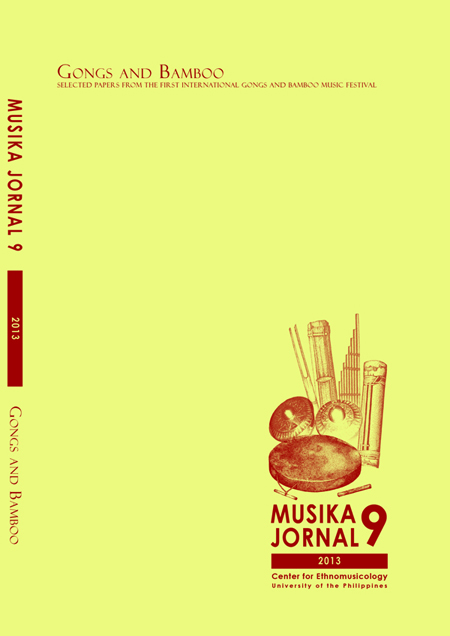Repertoire and Composition of Teduray Agong Music
Abstract
Teduray agong music is performed by 5 musicians, each with one gong. The interlocking gong hits produce melodic drones that identify a piece of Teduray agong music. In 1966, Teduray agong music was recorded in the village of Figel in Upi, Cotabato. Fifty-six years later, musicians from the villages of Tinungol and Sefegefen in Upi, Cotabato, were recorded and observed to have similar repertoire as those from Figel. A comparative study of several versions of similarly-titled agong music was conducted to establish a viable theory of composition for Teduray agong music based on Dr. José Maceda’s fundamental element of drone-and-melody in Southeast Asian music. Transcriptions reveal similarities and differences among several versions of a musical piece, and among pieces that were performed by the same group. Tempo and emphasis on individual gongs and drones significantly vary among the versions of same music that they played. Improvisation in the two lowest-pitched gongs was observed and leads to conjectures about aesthetics in their music. The influence of contemporary life on Teduray agong music was also observed in musical pieces performed by Christianized Tedurays. In this paper, the changed and unchanged aspects of the repertoire and composition of Teduray agong music will be presented.
Published
2016-06-23
How to Cite
GUEVARA, Rowena Cristina L..
Repertoire and Composition of Teduray Agong Music.
Musika Jornal, [S.l.], v. 9, june 2016.
Available at: <https://journals.upd.edu.ph/index.php/musika/article/view/5196>. Date accessed: 01 oct. 2025.
Issue
Section
Articles


